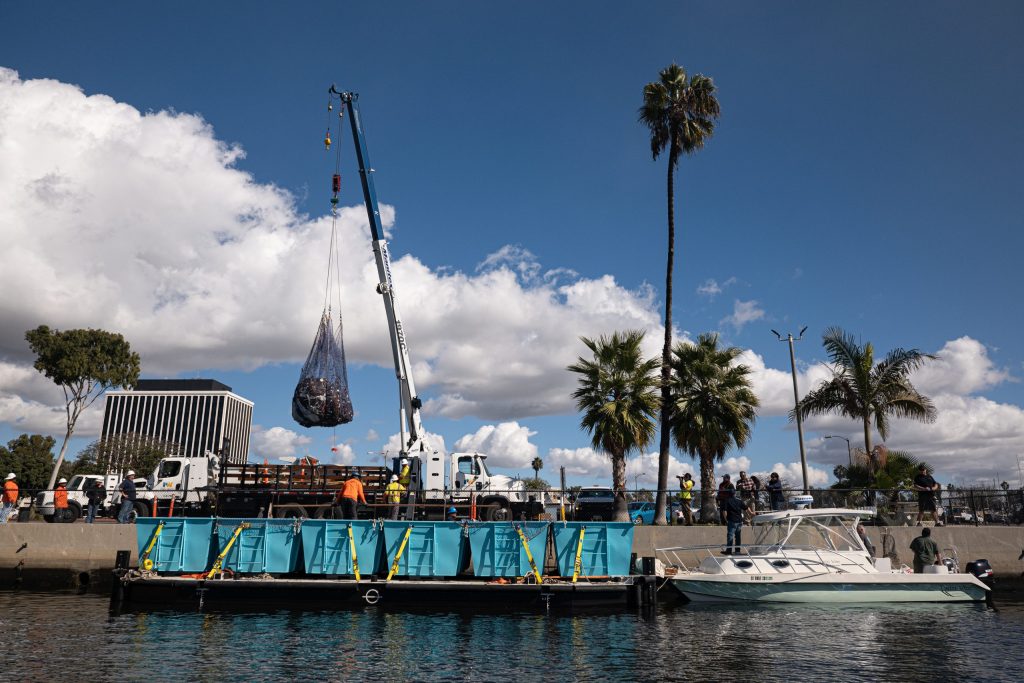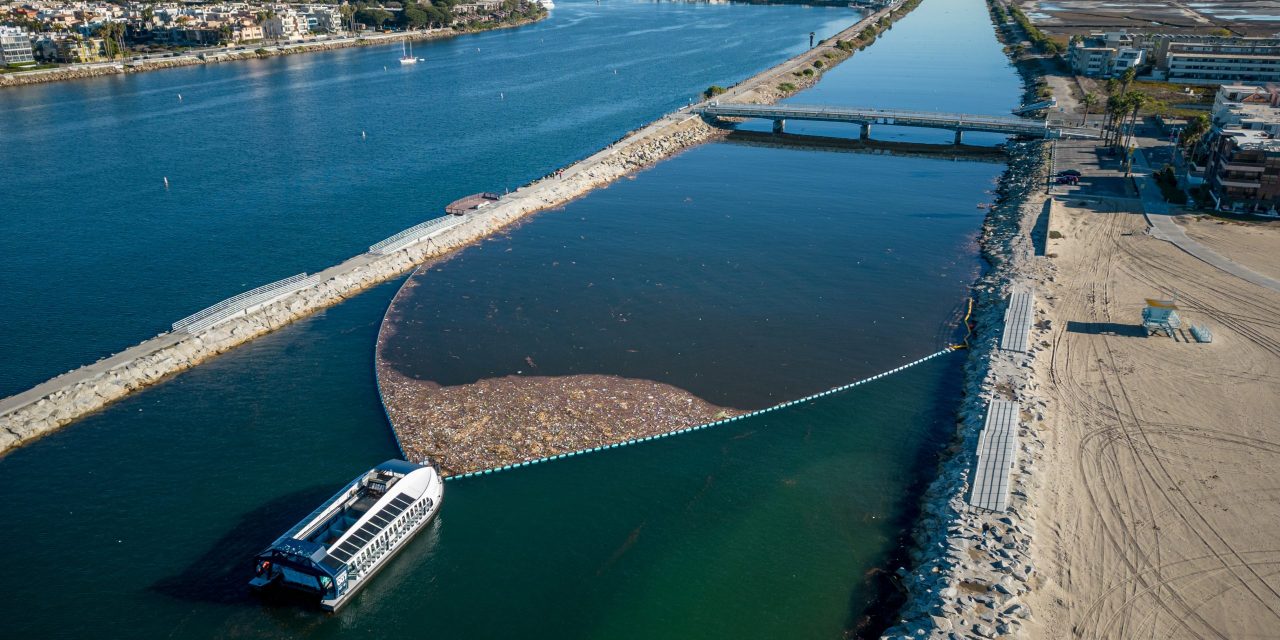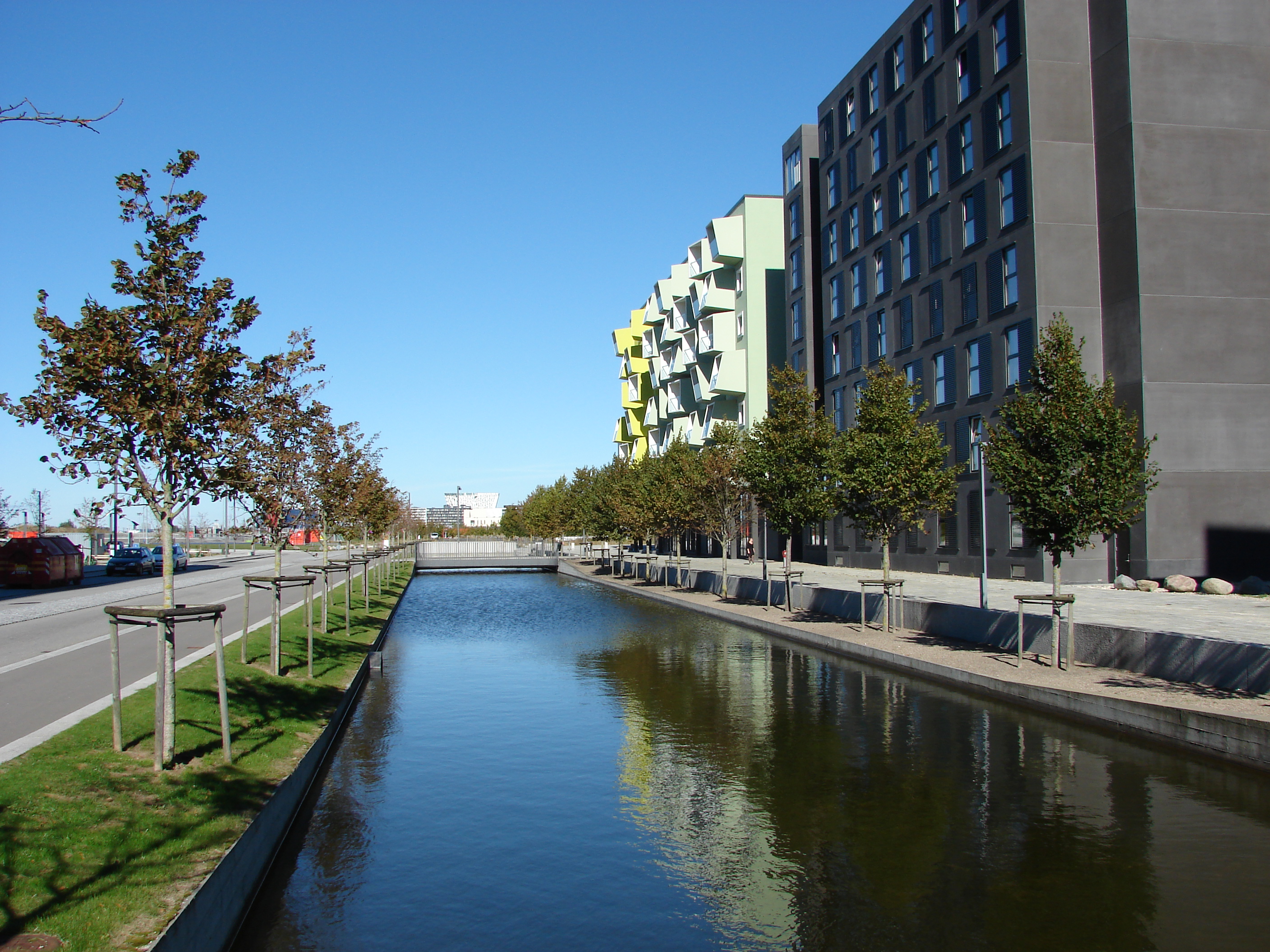A 24-m (79-ft) -long, solar-powered device installed at the mouth of Los Angeles’ Ballona Creek has stopped nearly 70,000 kg (155,000 lbs.) of trash and debris from entering the Pacific Ocean during its first storm season in operation, the Los Angeles County Department of Public Works (DPW) reports.
The Ballona Creek Trash Interceptor 007 is the first device of its kind in the U.S. It was developed and deployed by Dutch nonprofit The Ocean Cleanup (Delft). The Ocean Cleanup chooses strategic sites around the world to deploy their fully automated devices at no cost to the municipalities that host them. The devices clear debris from stormwater runoff and other sources before they reach the ocean. Similar devices are already operating in a growing number of marine-debris hotspots around the world, including sites in Indonesia, Guatemala, Vietnam, and Malaysia.
The Ballona Creek Trash Interceptor’s first storm season was marked by unprecedented runoff volumes generated by at least 12 atmospheric river storms as well as the strongest tornado to affect Los Angeles in 30 years.
“Its performance has exceeded our wildest expectations,” Boyan Slat told the Los Angeles Times in May. Slat is founder and chief executive of The Ocean Cleanup.
Simple, Sustainable Source Control
The Ballona Creek Trash Interceptor 007 floats just offshore from Ballona Creek’s discharge point, appearing as a wide, blue-and-white barge. It is moored to the north and south jetties of the channel and equipped with a purpose-built river monitoring system that sets the device in motion when stream conditions and weather forecasts suggest higher-than-usual flows. When it senses oncoming discharges, the solar-powered interceptor autonomously deploys two long, floating barriers in a V-shaped formation toward the shore.

Debris entering the Santa Monica Bay from Ballona Creek becomes trapped between the barriers, which gradually feed the trash into the opening of the device. A conveyor belt then guides the waste into six large, onboard dumpsters for periodic collection and proper disposal by DPW crews.
As part of its arrangement with The Ocean Cleanup, DPW pays to perform basic maintenance and ensure timely disposal of collected debris. However, DPW describes on its website that these additional staffing concerns do not entail higher burdens on taxpayers, as Los Angeles County’s existing stormwater fee as well as support from environmental nonprofit groups fully fund the device’s upkeep. The Ocean Cleanup paid to deliver, install, and initiate the device in October 2022, beginning a 2-year pilot program to gauge its performance. During this trial period — after which DWP will have the option to assume ownership of the device at no cost — The Ocean Cleanup maintains ownership of the interceptor.
Although the device exceeded expectations during its first storm season in Los Angeles, the inaugural stretch was not without its challenges. At least twice — once in January and again in May — heavy winds and strong waves during intense storm events damaged the device’s deployable barriers, prompting project partners to secure replacements. However, by repositioning itself, the device remained semi-functional even during these outages.
Placement is Paramount
Located in southwestern Los Angeles, the 14-km (8.5-mi) Ballona Creek is among the most urbanized U.S. streams.

The channel sits within a 335-km2 (130-mi2) watershed encompassing much of Los Angeles as well as Beverly Hills, Santa Monica, Culver City, and unincorporated Los Angeles County. The channel receives flows from an area with a combined population of approximately 1.5 million residents. A single storm-drain network serves the entire watershed, which collects runoff and debris from busy roadways and discharges it into Ballona Creek. According to DPW estimates, in an average year, heavy storms that overwhelm the drainage network send nearly 13,500 kg (30,000 lb) of plastic waste alone into Santa Monica Bay.
The Ocean Cleanup describes on its website that Ballona Creek represented an ideal site for a trash interceptor not only due to its debris output, but also its proximity to the North Pacific Subtropical Convergence Zone. This system of fast-moving ocean currents mixes nearshore waters with those hundreds of miles away from land, making trash and debris from Los Angeles and its surroundings particularly difficult to recapture after its discharge. Much of this waste from urbanized areas bordering the Pacific Ocean eventually concentrates in the Great Pacific Garbage Patch, a massive gyre of degraded but persistent microplastics covering approximately 1.6 million km2 (620,000 mi2) of the ocean as of 2018.
Learn more about the Ballona Creek Trash Interceptor 007 project at the DPW website.
Top image courtesy of The Ocean Cleanup

ABOUT THE AUTHOR
Justin Jacques is editor of Stormwater Report and a staff member of the Water Environment Federation (WEF). In addition to writing for WEF’s online publications, he also contributes to Water Environment & Technology magazine. Contact him at jjacques@wef.org.







